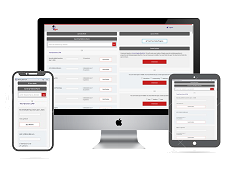
What are the possible side effects of Farxiga? [Select All That Apply]:
a. Dehydration
b. Ketoacidosis
c. Urinary tract infections
d. Vaginal yeast infections
e. Balanitis
What are the possible side effects of Farxiga? [Select All That Apply]:
a. Dehydration
b. Ketoacidosis
c. Urinary tract infections
d. Vaginal yeast infections
e. Balanitis
Answer: (a,b,c,d,e)
The active ingredient found in Farxiga is Dapagliflozin (Farxiga).
Farxiga may cause serious side effects including:
1. Dehydration
2. Ketoacidosis
3. Serious urinary tract infections (UTI)
4. Low blood sugar (hypoglycemia)
5. Bacterial infections under the skin of the genitals and areas around them
6. Vaginal yeast infections
7. Yeast infection of skin around the penis (balanitis) in men.
The most common side effects of Dapagliflozin (Farxiga) include yeast infections of the vagina or penis, and changes in urination, including urgent need to urinate more often, in larger amounts, or at night.



